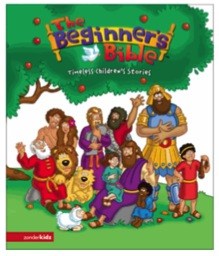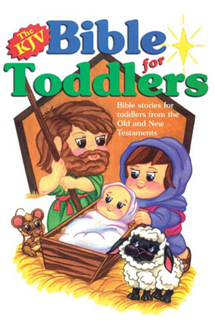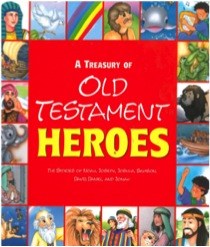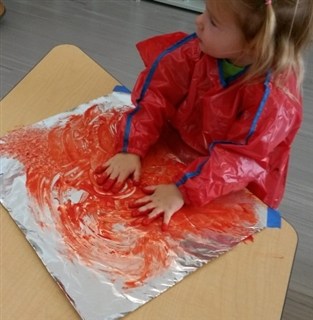- Add powdered tempera paint to flour in large container and mix well.
- Mix in baby oil.
Felt Story Characters for the Old Testament
Zacharias and Elisabeth
Learning to Make Right Decisions
By Dorothy Halverson
“At Principia, we are trying to help our girls and boys to stand on their own feet— to think things through for themselves from the basis of unselfishness, to use their knowledge of Christian Science in making decisions, and we try to help them to understand so clearly and simply how to do this that they naturally turn to divine Principle and find a solution for each problem that presents itself. When they fail to utilize the knowledge they have, we think it wise to let them learn the result of wrong thinking. We have seen great character growth from this kind of training.” Mary Kimball Morgan (Education at The Principia, p. 58)
“Would you like orange juice or apple juice this morning?”
“What toys shall we get out to share with Nancy when she comes over today?” “Will you eat politely or are you ready to get down?”
These are examples of appropriate choices young children may be given when making decisions. Though it’s often easier to make choices for our children, having the opportunity to choose can open a child’s thought in many ways.
The ability to make decisions is an important skill. It leads to responsibility, independence, self-esteem, and a broader understanding of new concepts. It can also teach consequences of behavior. Decision-making requires the ability to discriminate and provides receptivity to learning new concepts. It’s a way of teaching concepts with the child as an active participator. For instance, a child will learn more about color if you ask him to choose between two shirts of different colors than if you simply say, “Today, you’ll wear your blue shirt.”
Here are more examples of questions that teach concepts:
“Would you like peanut butter or cream cheese on your celery?”
“Will you wear the racing car shirt or the striped one?”
“Do you want grapes or a banana?”
“Shall we go to the park or the zoo today?”
“How many Goldfish crackers would you like?”
Asking these kind of questions can be a game, with many opportunities to choose and count, as children discover the amount that different responses bring. At first you’ll need to say, “How many ___? One or two?”, until the child responds with a number without prompting.
It’s also important not to go to the other extreme, by bombarding our children with too many choices. Most parents are able to find their own advantageous opportunities for decision-making.
Decision-making can be helpful in the area of discipline. Reaching the goal of self-discipline requires learning how to make choices, and the choices we give children can help them learn from the consequences of their actions. For instance:
“Will you stay next to me in this store, or shall I hold your hand?”
“Can you remember not to eat the play dough, or shall we put it away?”
“If you want to stay in the room with us, you’ll need to use your quiet voice.”
Children are capable of learning early on what kind of thinking they’re responding to and consciously choose thoughts and actions which lead to true joy, harmony, and satisfaction, rather than to discord and unhappiness. Learning how to make right choices will help support them later when faced with challenging decisions to make. The Bible commands us to, “Choose you this day whom ye will serve;” (Josh. 24:15).
Though it may seem unpleasant to some children to hear the cries of friends whom they have treated roughly, they can learn the true joy of making others feel happy and see the loving response they receive when they are gentle and helpful. We can encourage loving decisions by suggesting helpful actions to children and verbalizing the joy they bring. “See how happy you have made your baby sister? She loves her big brother.”
Right decision-making can eliminate some horn-locking when willfulness enters the discipline scene. It can provide an acceptable way out of an impasse or encourage a happy willingness to do the right thing. For instance, if a child would like to stay and play when it’s time to leave the park, you might offer an acceptable choice such as, “Will you carry the snack bag or water bottle to the car?” This shows the child that right behavior is expected, but that there are still some desirable options.
It’s helpful to think through what important demands we are making of a child in various areas and also what choices we could offer the child in those same areas. These demands, or rules, and choices will, of course, vary from home to home. It’s important for each family to settle on ones that are in keeping with the family values. Mealtime, bedtime, dressing, and social activities are some of the areas to consider in these ways.
Some example rules about mealtime might be:
- We always eat sitting down.
- We only eat sweets after a meal, never between meals.
- We eat at designated times rather than snacking any time we please.
- We have polite conversation at the table.
Some choices might be:
- “Which napkins shall we use?”
- “Would you like to dip your chicken in ranch dressing or ketchup?”
- “How many carrots would you like to eat?”
As you work with the concept of offering children appropriate choices along with reasonable limits (and these do change as the children mature), they will have many opportunities to utilize their thinking skills constructively.
Bible Books for Preschoolers and Their Parents
 THE BEGINNER’S BIBLE: TIMELESS CHILDREN’S STORIES BY KELLY PULLEY | A WONDERFUL WAY TO BEGIN TEACHING BIBLE STORIES TO VERY YOUNG CHILDREN. INTERESTING, COLORFUL PICTURES, AND TEXT THAT CAN BE READ ALOUD OR READ BY YOUNGER CHILDREN.
THE BEGINNER’S BIBLE: TIMELESS CHILDREN’S STORIES BY KELLY PULLEY | A WONDERFUL WAY TO BEGIN TEACHING BIBLE STORIES TO VERY YOUNG CHILDREN. INTERESTING, COLORFUL PICTURES, AND TEXT THAT CAN BE READ ALOUD OR READ BY YOUNGER CHILDREN. THE KJV BIBLE FOR TODDLERS BY BARBOUR BOOK STAFF | THESE STORIES ARE RETOLD FROM THE KING JAMES VERSION OF THE BIBLE, WRITTEN FOR VERY YOUNG CHILDREN. EACH ONE BEGINS WITH A QUOTE FROM THE KJV AND IS WRITTEN FOR TWO TO FOUR-YEAR-OLDS.
THE KJV BIBLE FOR TODDLERS BY BARBOUR BOOK STAFF | THESE STORIES ARE RETOLD FROM THE KING JAMES VERSION OF THE BIBLE, WRITTEN FOR VERY YOUNG CHILDREN. EACH ONE BEGINS WITH A QUOTE FROM THE KJV AND IS WRITTEN FOR TWO TO FOUR-YEAR-OLDS. A TREASURY OF OLD TESTAMENT HEROES BY PATRICIA PINGRY | THESE TIMELESS BIBLE STORIES ARE WRITTEN FOR 4 TO 8 YEAR OLDS. THE ILLUSTRATIONS ARE WONDERFUL, AND THE STORIES ARE OVER SEVERAL PAGES. I HAVE USED THE PICTURES IN THESE STORIES TO ‘TELL’ THE STORIES TO CHILDREN AS YOUNG AS TWO.
A TREASURY OF OLD TESTAMENT HEROES BY PATRICIA PINGRY | THESE TIMELESS BIBLE STORIES ARE WRITTEN FOR 4 TO 8 YEAR OLDS. THE ILLUSTRATIONS ARE WONDERFUL, AND THE STORIES ARE OVER SEVERAL PAGES. I HAVE USED THE PICTURES IN THESE STORIES TO ‘TELL’ THE STORIES TO CHILDREN AS YOUNG AS TWO. I CAN READ! BIBLE STORIES | THESE BOOKS ARE WONDERFUL FOR BEGINNING READERS. THEY HAVE MANY, MANY TITLES OF BIBLE STORIES, CHARACTERS, AND EVENTS THAT CAN BE PURCHASED FOR A MINIMAL AMOUNT. THE PICTURES ARE TERRIFIC, AND THEY CAN BE USED BY PARENTS TO TEACH THE STORIES, OR 1ST THROUGH 3RD GRADERS TO READ THE STORIES.
I CAN READ! BIBLE STORIES | THESE BOOKS ARE WONDERFUL FOR BEGINNING READERS. THEY HAVE MANY, MANY TITLES OF BIBLE STORIES, CHARACTERS, AND EVENTS THAT CAN BE PURCHASED FOR A MINIMAL AMOUNT. THE PICTURES ARE TERRIFIC, AND THEY CAN BE USED BY PARENTS TO TEACH THE STORIES, OR 1ST THROUGH 3RD GRADERS TO READ THE STORIES.Quotations on Obedience
—Mary Baker Eddy, Science and Health with Key to the Scriptures p. 62:4–12
—Mary Kimball Morgan, Education at The Principia p. 8:28–31
—Mary Kimball Morgan, Education at The Principia p. 23:2
—Mary Kimball Morgan, Education at The Principia p. 26:25–29
Principia School Acorn Program
Easy-to-Make Finger Paint
Ingredients
4 tablespoons of sugar
1/2 cup cornstarch
2 cups cold water
2 tablespoons liquid dish soap
Containers
Food coloring*
* (You can use liquid watercolors, too, but I’ve had better luck getting vibrant colors with paste food colors.)
Instructions
- Stir the sugar and cornstarch together in a small saucepan.
- Add 2 cups of water and stir over medium heat until the mixture thickens.
- Remove from heat and let cool slightly.
- Stir in dish soap.
- Divide into containers and add food coloring as desired.
- DO NOT cool in refrigerator!


